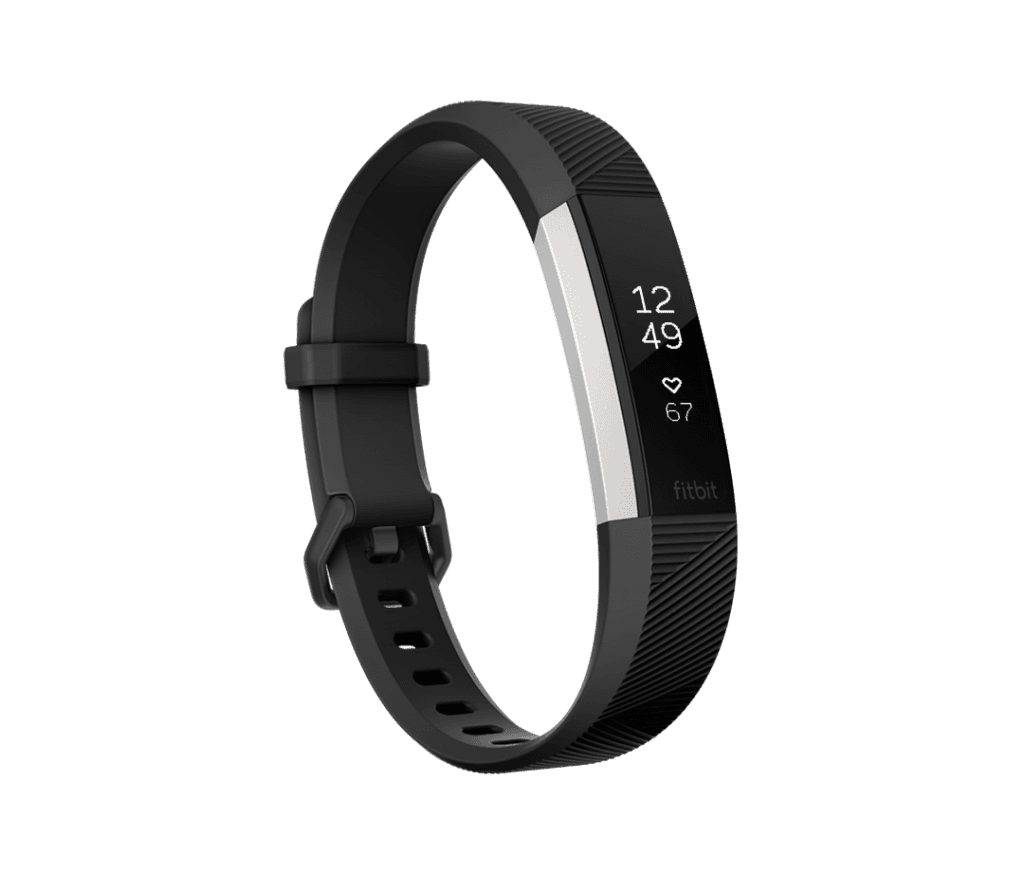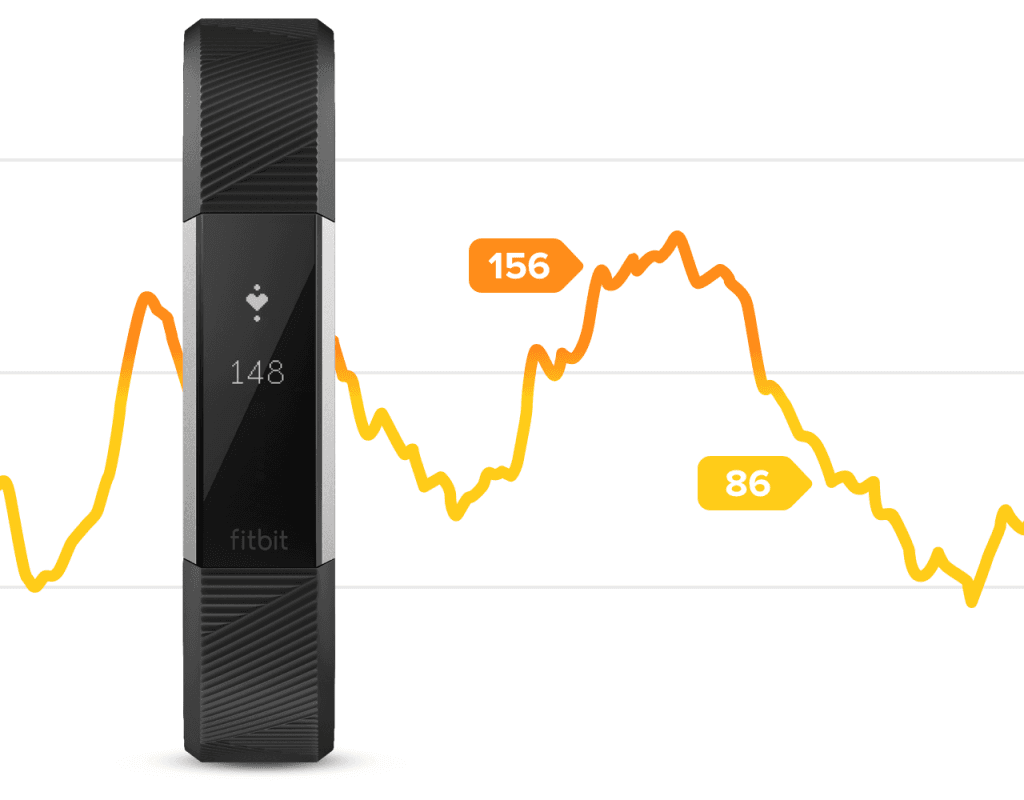Fitness Trackers Comparison: iFit vs Fitbit
Comparing Fitness Trackers: iFit vs Fitbit
Wearable fitness trackers are tiny computers and a big hit! Wearing a tracker makes it easy to know your daily step total, calorie intake/burn, and other fitness stats anytime. The convenience helps people reach goals more quickly — and the best fitness trackers can sync with personal training apps to show richer views of data. See examples in this comparison of two popular fitness trackers: iFit Vue and Fitbit AltaHR.
Meet the Contenders
With brand names like iFit and Fitbit, it’s easy to get “a bit” confused. iFit Vue and Fitbit AltaHR trackers look similar too. Each wearable tracker consists of a small black computer or “pod” that fits into a wrist band. Here the Vue and AltaHR pods are dressed in classic grey and black, but each mini computer fits into colorful wrist bands as well.
| iFit Vue | Fitbit AltaHR |
 |  |
A free iFit Vue is shipped to users of the iFit Coach personal training app. iFit Coach can show your tracker’s data in color and with charts — plus it uses the numbers to make personalized recommendations about workout programs, meals, sleep time and more. The tracker is free even with a one-month iFit Coach subscription ($15). The Vue retails for $129.99.
Fitbit AltaHR also works with exercise apps, but the wearable tracker isn’t free with sign-up. It retails for $149.95.
What They Can Do: Comparing Fitness Trackers’ Functions
The main activity tracking functions of Vue and AltaHR are similar. Each device has unique functions too. With both trackers you move through the menus by tapping the LED screen.
Heart Rate Tracking
As the name “AltaHR” suggests, this Fitbit can track your heart rate. iFit Vue can track your heart rate too. Here’s a comparison of tracker technologies.
Heart Rate Tracking with AltaHR
Fitbit AltaHR uses LED lights to track heart rate. As your capillaries expand and contract with your pulse, the lights reflect off your wrist to measure changes in blood volume.
A heart icon on AltaHR shows heart rate zones 1, 2 and 3. These represent Fat Burn, Cardio and Peak levels of cardio exertion (exercise at 50 percent to 85 percent of your max cardio capacity). You can customize the settings.
AltaHR also delivers a cardio fitness score. This is an estimate of your VO2 max, or your peak oxygen consumption. Personal trainers consider VO2 max to be an excellent indicator of cardiovascular endurance.
Heart Rate Tracking with Vue
iFit Vue tracks heart rate wirelessly when it’s paired with a chest strap. You wear the strap under your shirt, and with Bluetooth it sends pulse data to the tracker.
A Bluetooth SMART chest strap is included with select iFit Coach treadmills and other iFit Coach fitness machines. (See NordicTrack and ProForm for the widest selections.) The straps retail for about $79.
Like the Fitbit, the iFit Vue lets you see your cardio exertion level in a glance. You can also get advanced heart rate data when you log into iFit Coach on your fitness machine, computer or mobile device.
Step Counting
Counting your daily steps is an easy way to improve fitness. Checking your total tends to be motivating: As the numbers climb, you’re encouraged to reach a daily goal or beat a personal record.
Comparing fitness trackers we find that Vue and AltaHR both set default step goals of 10,000 per day. You can see your progress anytime (and adjust your goal, if desired) by tapping the tracker screen.
The Fitbit can be calibrated for your stride. Another special feature is an hourly “step alarm.” If you haven’t taken 250 steps in the past 50 minutes, AltaHR will vibrate to let you know. If you then take 250 steps or more, you’ll get a congratulatory message. Vue also lets you set reminders called “Move Time Alerts.” For example, if you sit still for 30 minutes, the tracking pod will vibrate.
To track steps with either device, you need to swing an arm… so for some activities (such as pushing a lawn mower) you’ll need to manually record your exercise. Another option is to track your distance instead of steps.
Distance Tracking
Instead of tracking steps, you can track distance with your wearable. You can also set daily distance goals.
iFit and Fitbit let you track daily distance in miles or kilometers. Just tap the screen anytime to see your goal and your progress. With activity tracking in iFit Coach and other apps, stats can be broken down into walking distance and running distance.
Calorie Counting
Weight management obviously involves a balance of calorie intake and calorie burn. Trackers by iFit and Fitbit make customized calorie recommendations, and they make it easy to see your daily intake/burn totals. Your basal metabolic rate (BMR) is included… so when you wake up, calories have already been burned and tracked for the day. That’s motivating!
Fitbit Calorie Tracking
AltaHR automatically tracks an estimate of calories burned. This wearable can also show total calorie consumption, but you need to log calories elsewhere (a smartphone, tablet or desktop computer).
If you use AltaHR with an Android phone, you can get a chart of your daily macronutrient consumption too. That’s a breakdown of your calories by carbs, fat and protein.
Vue Calorie Tracking
iFit Vue automatically tracks an estimate of your calorie burn. Besides that, Vue makes it easy to log an estimate of calories consumed. By tapping the device you can enter calories in increments of 50.
For extreme precision you can enter calorie data with the iFit Coach app. The app integrates a database of calorie counts for thousands of foods and beverages (for example, an apple or a serving of artichoke hummus). See how it works in our iFit Coach Guide. The Fitbit app also provides a nutrition database.
Whichever way you add calorie data, iFit Coach will adjust its personal training advice. Your virtual coach’s meal/snack suggestions and workout suggestions will reflect your calorie log.
Sleep Tracking

Fitbit Sleep Tracking
Fitbit AltaHR uses its heart rate LED lights to measure your sleep cycle. It charts the time you spend awake, restless and soundly asleep. To see your previous night’s data, tap the Sleep tile in the Fitbit app. Fitbit also lets you set a goal for number of sleep hours.
Vue Sleep Tracking
Vue automatically enters sleep mode when your arm is still for an extended time period. You can also set your sleep time with the iFit Coach app. (Also, if you like, the tracking pod can vibrate as a wake-up alarm.) Feedback include time spent awake, asleep, and in deep sleep. Vue can also indicate the number of times you woke up.
For advanced sleep tracking you can pair Vue with a sleep sensor. It works with the free app iFit Sleep. iFit Sleep shows your average heart rate, respiration data, sleep stages and more.
Bonus: Text Notifications

AltaHR can send texts to notify you of calendar events, calls and texts. These features work with select iPhones, Android phones and Windows 10 phones.
iFit Coach is designed for iOS and Android. However, Vue can only send Caller ID and text message notifications to select Android phones. Vue can also show notification of text messages sent member-to-member within iFit Coach.
App Integration
For advanced views of your wearable tracker data — and lots more features — you can use a mobile app or your desktop computer. Pair a smartphone with your Fitbit or iFit tracker to share data.
Fitbit Statistics Syncing
Numbers collected by a Fitbit wearable can be shared with lots of health/fitness mobile apps. Some popular choices are MapMyRun, MyFitnessPal, Strava, RunKeeper and Weight Watchers.
Fitbit uses low energy Bluetooth (BLE) and WiFi to send data to phones, tablets, certain Windows 10 computers and routers. You can also transfer data manually.
iFit Vue Stats Syncing
iFit Vue is made to sync with iFit Coach personal training apps for iOS and Android. iFit Coach app subscriptions include lots of features beyond stats tracking. Considering your stats and fitness goals, iFit Coach makes tailored suggested about workout programs, recipes to try and much more.
iFit Coach workout programs include interactive HD video workouts and Google Maps workouts. These programs can control iFit Coach home fitness equipment including treadmills, elliptical trainers and exercise bikes.
Final Thoughts Comparing Fitbit and iFit Trackers
Comparing fitness trackers here, we see that AltaHR and Vue are pretty similar. Which is best to try?
- Since it’s free with iFit Coach signup, iFit Vue is the obvious choice for people using iFit Coach home fitness machines (e.g., NordicTrack treadmills) as part of personal training. And if you don’t continue to pay for iFit Coach personal training, you’ll still have useful stats viewable anytime.
- AltaHR is meant for integration with apps other than iFit Coach, such as RunKeeper.
Got questions as you compare activity trackers? Let us know in the comments and we’ll see if we can help.

 Our goal is to help you reach your fitness goals with what we've learned (and are still learning - as well as the other experts and influencers.
Our goal is to help you reach your fitness goals with what we've learned (and are still learning - as well as the other experts and influencers. Best Ellipticals
Best Ellipticals Best Treadmills
Best Treadmills Best Max Trainers
Best Max Trainers Best Exercise Bikes
Best Exercise Bikes Best Home Gyms
Best Home Gyms





2 Comments